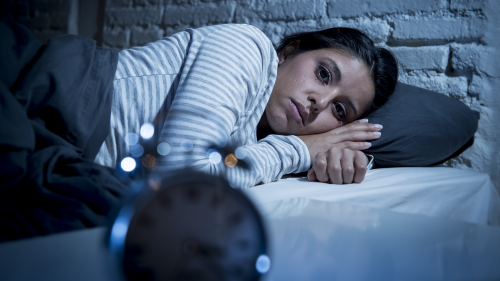
A study in Cairo concludes that some sleep disorders are more frequent than others.
According to researchers at the Cleveland Clinic, about 70% of Americans regularly experience some form of disordered sleep, and disordered sleep is prominent in many kinds of psychopathology. Curiously, sleep is a neglected topic in EDs, even though many people with EDs complain of physical problems, particularly interruptions of their normal sleep patterns. A group of researchers at Ain Shams University, Cairo, have recently completed a rigorous study of sleep in people with EDs (Sleep Medicine.2018; 48:113).
Dr. Tarek Asaad Abdou and colleagues designed a cross-sectional observation study to investigate the sleep cycle of female anorexia nervosa (AN) and bulimia nervosa (BN) patients and healthy matched controls. The Egyptian researchers used a structured sleep disorder questionnaire and all-night polysomnography (or “sleep study”) to compare sleep in both groups.
All the women in the study had no comorbid physical illnesses or any neurologic disorders. Patients with AN who had body mass indexes (BMIs) less than 15 mg/kg2were excluded from the study. A control group of 20 healthy individuals were matched for age and gender. The authors administered the Beck Depression Inventory II to the patient group only, to assess the presence and severity of depression. Patients and controls also had sleep assessments with the Structured Sleep Disorder Questionnaireand an all-night PSG. The assessment also included electrooculography (used to measure eye movements during sleep), electromyography of the chin and leg, EKGs, and measurements of respiratory effort snoring and oxygen saturation levels, along with body positions during sleep. The tests were performed after the patients had been medication-free for at least 7 days.
Significant differences were identified
Twenty-three female patients 20 to 40 years of age (mean: 30 years), 9 with AN and 14 with BN, took part. The authors found statistically significant differences between the patients and controls. Among the eating disorders group, there was longer sleep latency (or time needed to fall sleep), reduced sleep efficiency, and significant increases in the arousal index compared to controls. Other differences emerged in REM sleep findings—there was twice as much stage 2 non- REM sleep in the patients as in the healthy controls. There were no significant differences between the two groups in obstructive sleep apnea, or periodic leg movements.
All sleep complaints, including all types of insomnia, daytime sleepiness and parasomnias, were more common in both AN and BN patients compared to controls. The most common complaint was initial insomnia (56.5% of ED patients). The next most common sleep disorder was interrupted sleep, which affected 48% of patients. Late insomnia and daytime sleepiness affected 22% of the patients.
Sleep changes could not be explained by depression alone. The authors confirmed that sleep and EDs are highly correlated, and they also called for future research into sleep and eating disorders.
